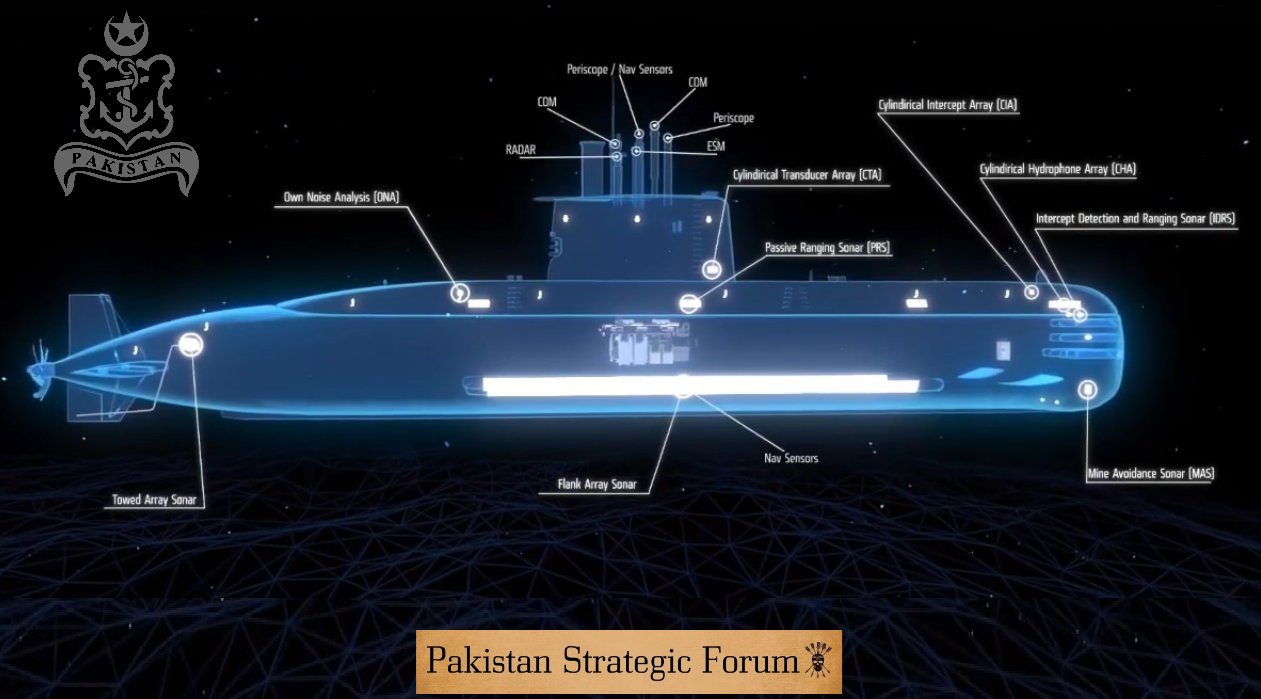Pakistan Navy’s Submarine Fleet
- Diesel-Electric attack submarine (SSK): Total 5 Units
- a) Agosta-70, Hashmat Class (SSK): 2 Units.
- b) Agosta-90B, Khalid Class (SSP:): 3 Units
(Hashmat and Khalid class are subtypes of Diesel-Electric attack submarine).
c)110 Mini submarines: Total 3 Units.
Capabilities
Air Independent Propulsion System: Every Submarine needs access to atmospheric oxygen to operate because the engine requires oxygen to burn fuel. That can be done by surfacing or using a snorkel. A submarine must come upon the surface or up to the periscope depth (Periscope Depth is defined as the depth needed to extend the scope above the surface of the water), which is 14 meters deep. The submarine can safely take out its periscope along with necessary air suction and exhaust pipes to keep the engine running. All diesel-electric submarines run on very powerful batteries when fully submerged below periscope depth.
Air-independent propulsion (AIP) allows a non-nuclear submarine to operate without access to atmospheric oxygen, while staying fully submerged (underwater). This makes it more secure and adds value to its protection.
AIP and Stealthiness of Submarine
Nuclear submarines constantly run the reactors that produce noise often called as “Acoustic signatures”. This Acoustic signature makes submarine vulnerable as this noise can help in the identification of their condition, behavior, and physical location. Moreover, Nuclear submarines are often bigger in size as compared to non-nuclear submarines. Non-nuclear submarine runs on batteries or AIP. These two features make Non-Nuclear submarines stealthier than nuclear submarines.
Pakistan Navy’s Khalid Class Submarine
Pakistan Navy Khalid class submarine (Agosta-90B), features French MESMA (Module d’EnergieSous-Marin Autonome) air-independent propulsion (AIP) system. This not only increases the range and but also the endurance. Thereby allowing submarines to stay under the water (submerged) for a longer period. This enables the submarine to remain submerged three times longer.
Armament of Khalid-Class Submarine
Armed with 533mm torpedo tubes, the Khalid-class submarine (Agosta-90B) can launch TORPEDOES: DM2A4 SeaHake Mod4. The Torpedo carries up to 250kg warhead and can deliver it to a range of 20km at a maximum depth of 600m.
Anti-ship missiles: Khalid-class submarine is capable of Firing Exocet SM39 AShM. It can deliver 165Kg warhead at 50km.
Submarine-Launched Cruise Missile (SLCM): Khalid-Class (Agosta-90B) submarine can launch Babur III, having a range between 450km-700km.
Mines: It can deploy Stonefish naval mines.
Modernization Khalid Class Submarine (Agosta-90B)
Pakistan Navy Khalid Class Submarine (Agosta-90B) will undergo a midlife upgrade for which Turkey’s STM is selected as the main contractor.
The midlife upgrade includes.
i). Zargana ATDS
ii). Radar
iii). Periscope and Optronics Mast
iv). Electronic Support Measures
ZARGANA Submarine Torpedo Countermeasure System
In Mid 2019 Pakistan purchased an export version of Turkey ZARGANA anti-torpedo countermeasure system to equip its Khalid-class submarine (Agosta-90B). A little into capabilities of the ZARGANA anti-torpedo countermeasure system.
COMPONENTS
- Acoustic Decoy
- Acoustic Jammers
- Decision Support System
- Launcher Control Panel
Working
When the torpedo is launched it emits pulses, once the submarine picks these threat pulses, they are sent to the threat library where they are diagnosed.
ZARGANA Launcher control system launches Acoustic jammers, these jammers alters incoming torpedo’s tracking capabilities and deviates it from its path thus disturbing the Torpedo. At the same time, the Launcher system launches Acoustic decoy, which deceives incoming torpedo with the help of fake signatures (programmed acoustic noise is installed in decoys) of the ship. Thus, the Torpedo keeps following the decoys until it runs out of energy and become dead.
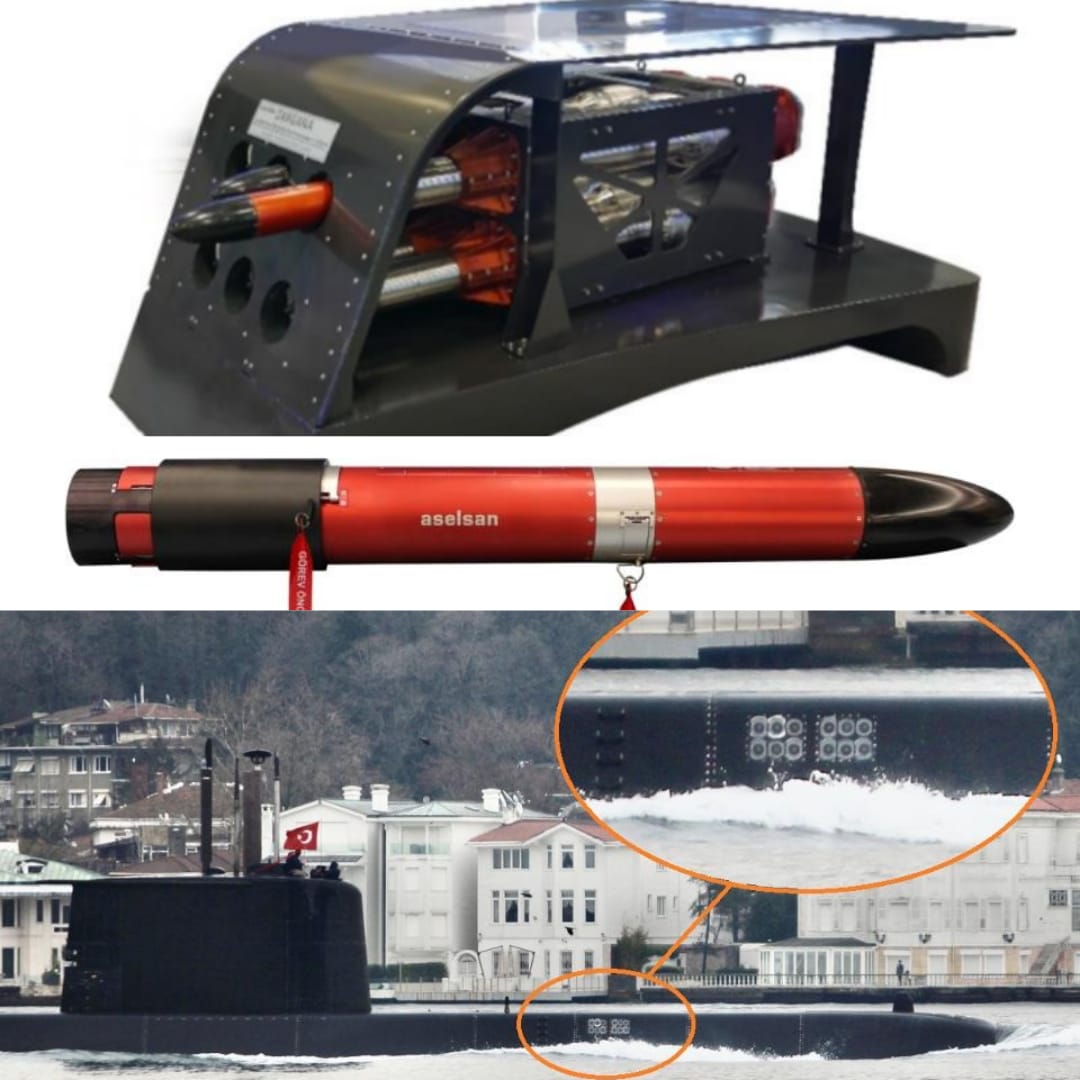
Radar: Kelvin Hughes sharp eye Doppler submarine radar is selected by Pakistan Navy to replace the current radars in its Agosta-90B Khalid class submarine.
Capabilities: I-Brand Sharpe eye Doppler radar offers.
1: Tactical and situational awareness
2: Detection of smallest targets on land and at sea at greater ranges.
3: Navigational crew can visualize land, sea, and airborne targets.
4: Target identification (Friend, Foe, neutral, unknown).
5: Anti-submarine warfare
6: Enhance collision avoidance features such as Radar Plotting Aid (ARPD) collision warning system.
7: Helo approach path
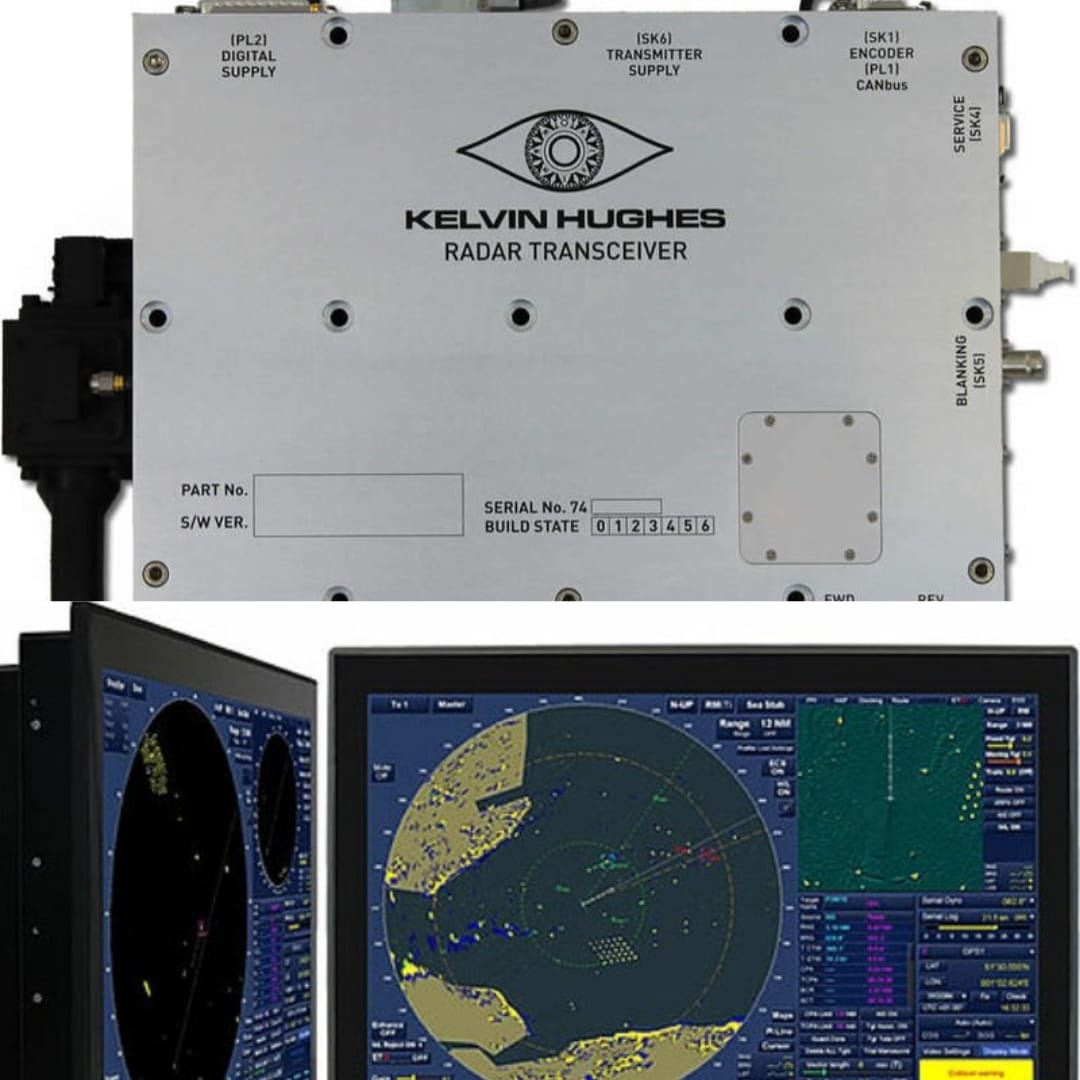
Periscope and Optronics Mast
PN Agosta-90B Khalid class submarine will be modernized with SERO 250 Periscope and OMS-200 Optronics mast.
STM which is a prime contractor for upgrading the Pakistan Navy submarine fleet awarded Hensoldt Optronics South Africa (HOSA) to supply its SERO 250 Periscope and OMS-200 Optronics mast.
SERO 250 Periscope: It will replace the current search and attack periscope on the Pakistan Navy Agosta-90B submarine.
Capabilities
1: Monitor surface and air activity
2: collect Navigational data to detect and identify targets.
3: provides a video signal for parallel observation.
OMS-200 Optronics Mast
It comprises of HDTV camera, Short wave infrared camera (SWIR) and eye-safe laser range finder on the line of sight (LOS)
Capabilities: It fulfills complex requirements for Reconnaissance, Surveillance, and intelligence gathering.
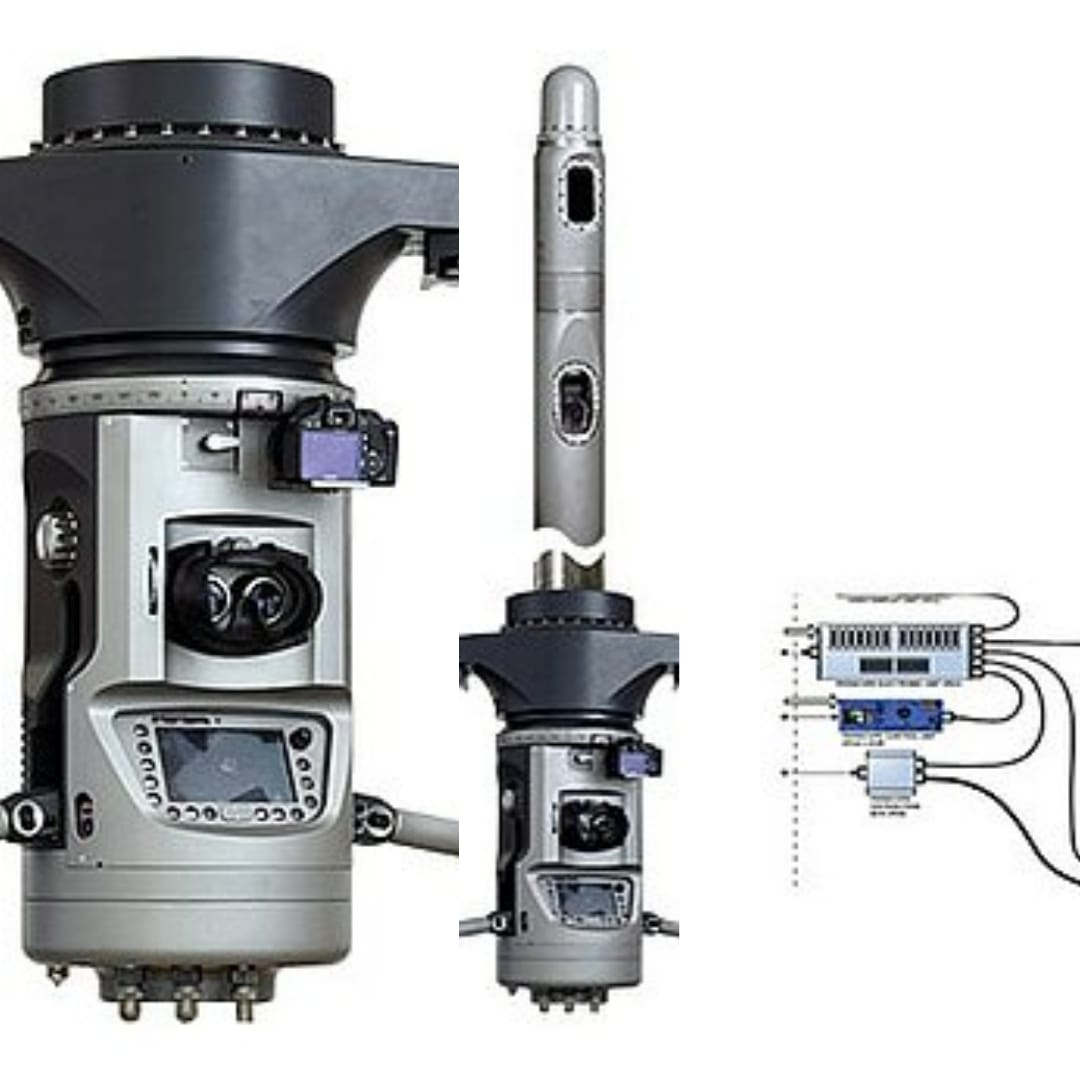
Electronic Support Measures
ASELAN ARES-2SC second generation will be installed on periscope and Optronics mast to carry out its Electronic Support Measures.
It has a dedicated ESM mast antenna, separate omnidirectional Radar Warning Receiver (RWR) antenna designated for installation on periscope.
Capabilities
It is capable to intercept, detect, identify tracks radar signal with precise parameter measurements, and provides automatic identification.
ACQUISITION OF NEW PLATFORM (HANGOR Class Submarine)
In April 2015, the government of Pakistan approved the purchase of eight more submarines from China.
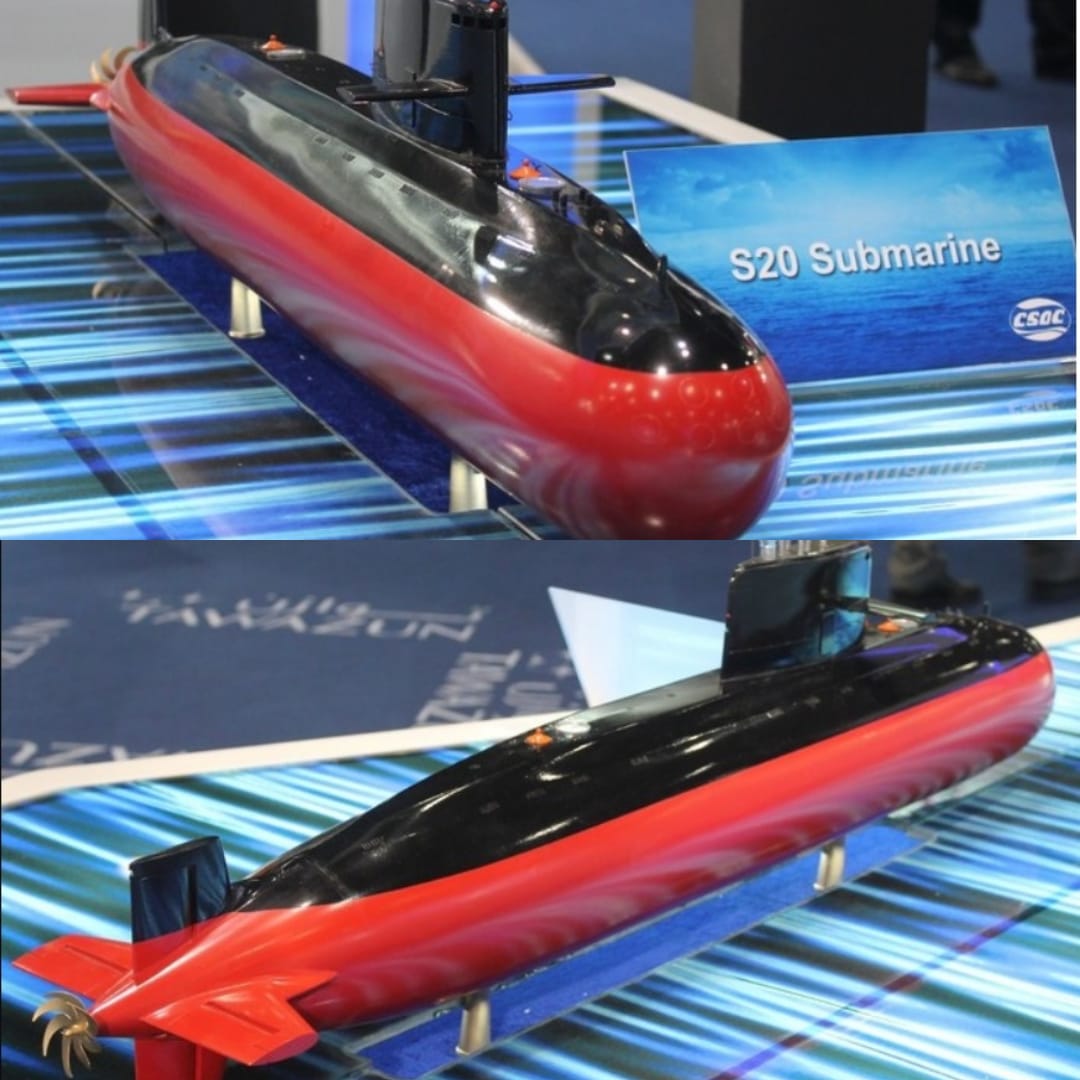
HANGOR Class Submarine
Hangor-Class is AIP-Powered-Type-039B Diesel-electric attack submarine. It is named after a Dipne Class submarine (PNS Hangor) with Pakistan navy, which torpedoed and sank INS KUKRI during the 1971 war. PNS HANGOR will house Chinese Sterling Type AIP or will be later retrofitted with FUEL-CELL AIP, but the later one is more effective for warm waters of the Arabian sea and Pakistan’s coastal waters.
CAPABILITIES: AIP-Powered (TYPE-039B) will be a deadly threat for low stealthy and less maneuverable submarines and will be very handy in prolonged submerged operations.
Pakistan navy is interested to deploy its SLCM (Babur-III) on Hangor-Class (Type-039B) submarines.
DELIVERY: The first batch of four submarines will be delivered to Pakistan Navy in 2022, while the rest of 4 will be built at Karachi shipyards & engineering work (KSEW).
Follow us on Twitter: @ForumStrategic
Follow us on Instagram: strategic_pak
Follow us on Reddit: r/PakStrategic
#Zarrar
#TeamPakistanStrategicForum



